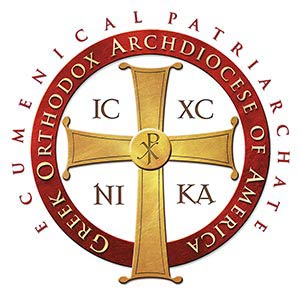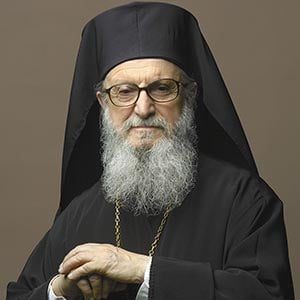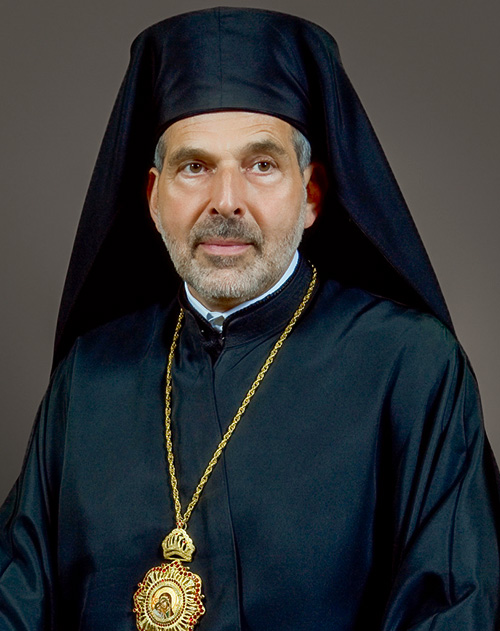Message from Metropolitan Alexios
My Beloved Ones,
Χριστὸς ἀνέστη!
Christ is Risen! Truly He is Risen!
As we continue through this Paschal season, our Church has dedicated this Sunday to the Myrrh-bearing Women. Consider, my friends, the followers of Christ after His betrayal and arrest in Gethsemane. Apart from John the Beloved Disciple (and before his denial, Peter), each of the remaining Disciples fled from the Garden in fear. Of those who followed Christ during His earthly Ministry, the women showed greater courage as they watched their Lord and Master suffer and give up His spirit.
We read in last week’s Gospel that “On the evening of that day, the first day of the week, the doors being shut where the disciples were, for fear of the Jews…” (John 20:19) Even after the Lord’s Resurrection, the Disciples still lived in fear of what might happen to them. Think about the bravery exhibited by these women, who, as the Gospel said, “…went to the tomb when the sun had risen…” Remember also that the tomb was under heavy guard. Such was their respect and love for the Lord, that they were willing to brave the dark journey—and the possible consequences—to honor Him. Our Lord, in His infinite love for mankind, bestowed the gift of proclaiming His Resurrection to those who had never wavered in spirit.
I ask us to consider their example by reflecting on what sort of love we have in our hearts for our Lord Jesus Christ. Indeed, it is very easy for some to say, “Yes, I am a believer, and that is because I hope for eternal life.” While it is true that, as St. Paul says, we have hope in Christ’s Resurrection, do we love Christ’s because of our promised rewards; or do we love Him as did the Myrrh-Bearers?
Out of a deep sense of love, they not only put their lives in jeopardy, but they gave of their time and resources to anoint Him. While we cannot honor Christ’s earthly Body with aromas and spices, we can receive His Body with love and honor during the Eucharist. Then, when we approach to receive His Body and His Blood during the Divine Liturgy, we must ask ourselves again: with what kind of love shall we offer to Him? Again, we must know in our hearts if it is a love motivated by hoped for rewards, or because we truly love Him?
If we truly love Him, we must listen to Him and act according to His Will, and we must first love our neighbor. I hope and pray that each and every one of you will make the conscious decision to proclaim the true love we each should have in our Lord Jesus Christ.
+ALEXIOS
Metropolitan of Atlanta
Youth, Education & Hellenic Culture
St. Stephen’s Summer Camp 2019 Summer 2019 Dates are:
Week 1: June 23 -June 29
Week 2: June 30 - July 6
Week 3: July 7 - July 13
Week 4: July 14 - July 20
Week 5: July 21 - July 27
For more news, activities, and upcoming events, please click this link!
2019 OCAMPR Conference
"The Orthodox Christian Association of Medicine, Psychology and Religion, an international, pan-Orthodox organization endorsed by the Assembly of Canonical Orthodox Bishops of the United States of America, welcomes presentations of Workshops and Papers at its Annual Conference, " Isolation. Violence. Hope and Communion" which will be held November 7 -9 at Saints Peter and Paul Greek Orthodox Church in Glenview, IL (Chicago area).
The Annual Conference offers a unique opportunity for Orthodox clergy, theologians, and healthcare professionals to come together for fellowship and to engage in interdisciplinary dialogue. OCAMPR requests that proposals for presentations reflect professional, academic discussion on critical issues regarding the helping professions and pastoral care, specifically as it relates to our Orthodox Christian faith."
For more submission infornation please click here.
Family Life Ministry
A growing branch of Family Life Ministry and generously powered by Leadership 100, Engage Orthodoxy is a place for anyone to find Orthodox Christian Content curated by a thoughtful and intentional administrative team.
“Engage Orthodoxy” is not only the name of this new site, but it is also the name of a movement away from division and towards unity. Engage Orthodoxy is a movement towards community, involvement, Orthodox friendships, and relationships. EO seeks to bring the the faithful, the curious, the lost, and the searching TOWARDS their faith and Christ and in turn, towards each other. Engage Orthodoxy is a movement forward into the future of the faith. Join us as we move toward Christ, toward each other, and toward the church.
For more information, or to order “Woven: An Interactive Book for the Modern Teenage Girl on Orthodox Christianity” please visit, woveninhislove.org
We also share with you helpful links from the OCN and the Family Life Ministry of the Metropolis of Atlanta.
Journey of Marriage (Pre-Marital Seminar)
All couples marrying in the Metropolis must attend a Metropolis-sponsored Journey of Marriage seminar prior to their wedding. The couple will present their certificate of completion to their parish priest after the seminar.
- May 18, 2019 - St. George, New Port Richey, FL
- Sep 07, 2019 - St. George, Hollywood, FL
To see the full list of seminars in Florida and in our entire Metropolis please visit: http://www.familylifeministry.atlanta.goarch.org/upcoming-events-2/
Registration is online. Materials costs are included in the registration.
The Strategic Plan
Clergy-Laity Workshops (6/27 & 6/28/19)
Want to learn the latest best practices on how to grow your parish?
How about learning to create a plan for the future of your parish?
How do I fund the essential ministries of my parish and become less dependent on fund raisers?
Have I covered all the significant risks to my parish and what risks go beyond insurance coverage?
Are my religious education programs covering all that they should and are they effective? Is leadership training important to my role in the parish?
If you and your fellow parishioners have ever discussed these topics and you want to learn more, then …
PLAN TO PARTICIPATE AT THIS YEAR'S METROPOLIS CLERGY-LAITY ASSEMBLY, THURSDAY JUNE 27 and FRIDAY JUNE 28.
MORE DETAILS TO FOLLOW - Click here for the online portal.
Visit Click here to view a list of the completed goals.
Shop with Amazon, donate to the DRC
Amazon Smile is a program that allows for 0.5% of your eligible Amazon purchase to be donated to the Diakonia Retreat Center (No Added Cost To You). To find our Amazon Smile page, visit https://smile.amazon.com/ch/91-2187047.





 ATLANTA – The Archdiocesan Council of the Greek Orthodox Archdiocese of America, which is meeting for its regular Spring meeting in Atlanta, May 9-10, 2019, received yesterday a request from the Ecumenical Patriarchate asking for the Council’s opinion according to article 13 of the Charter to be submitted today by 2:00 p.m. EDT.
ATLANTA – The Archdiocesan Council of the Greek Orthodox Archdiocese of America, which is meeting for its regular Spring meeting in Atlanta, May 9-10, 2019, received yesterday a request from the Ecumenical Patriarchate asking for the Council’s opinion according to article 13 of the Charter to be submitted today by 2:00 p.m. EDT.
 Resolution of Thanks and Appreciation for His Eminence Archbishop Demetrios, Geron of America
Resolution of Thanks and Appreciation for His Eminence Archbishop Demetrios, Geron of America
 Resolution of Thanks and Appreciation for His Grace Bishop Andonios of Phasiane
Resolution of Thanks and Appreciation for His Grace Bishop Andonios of Phasiane